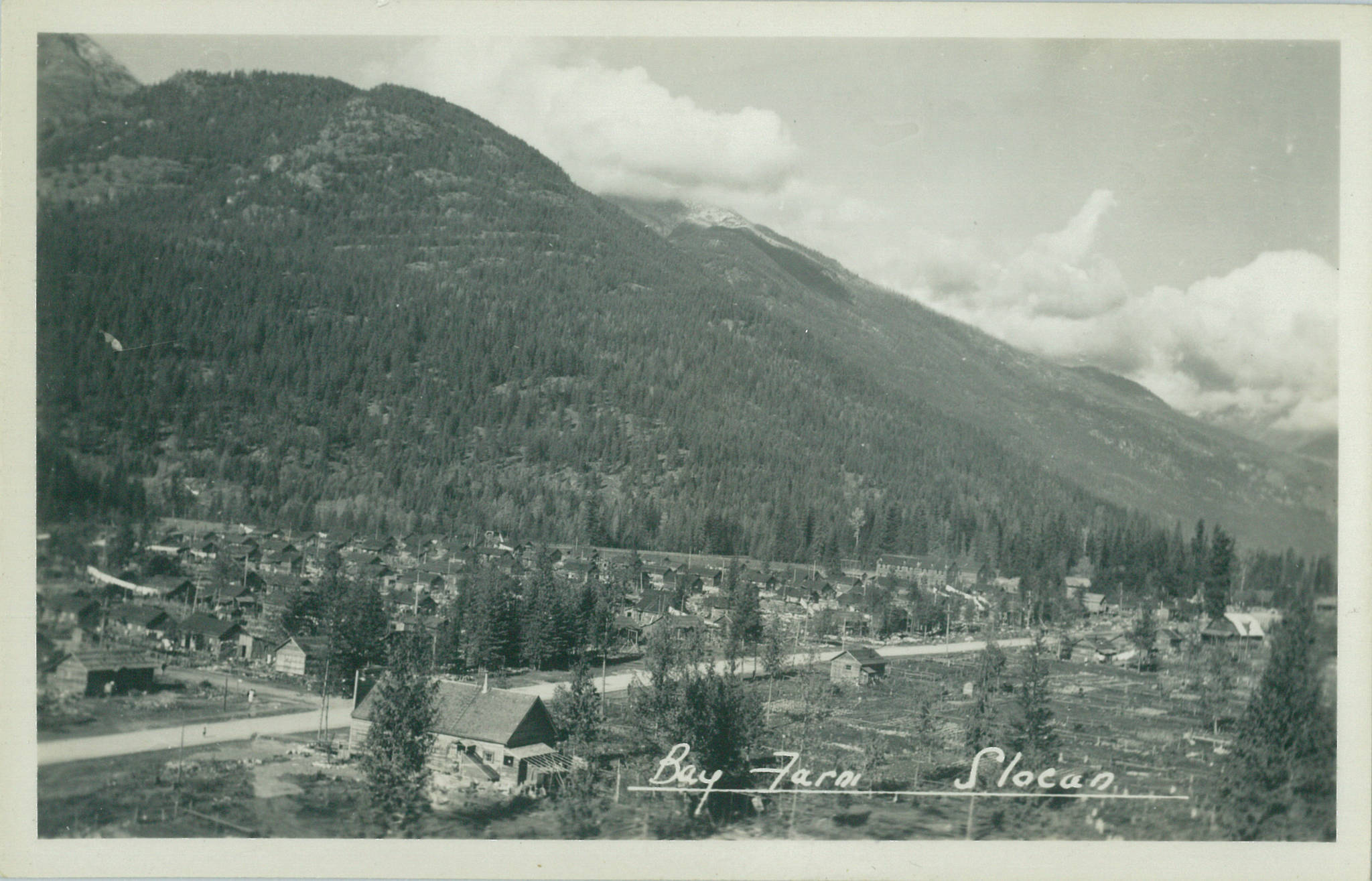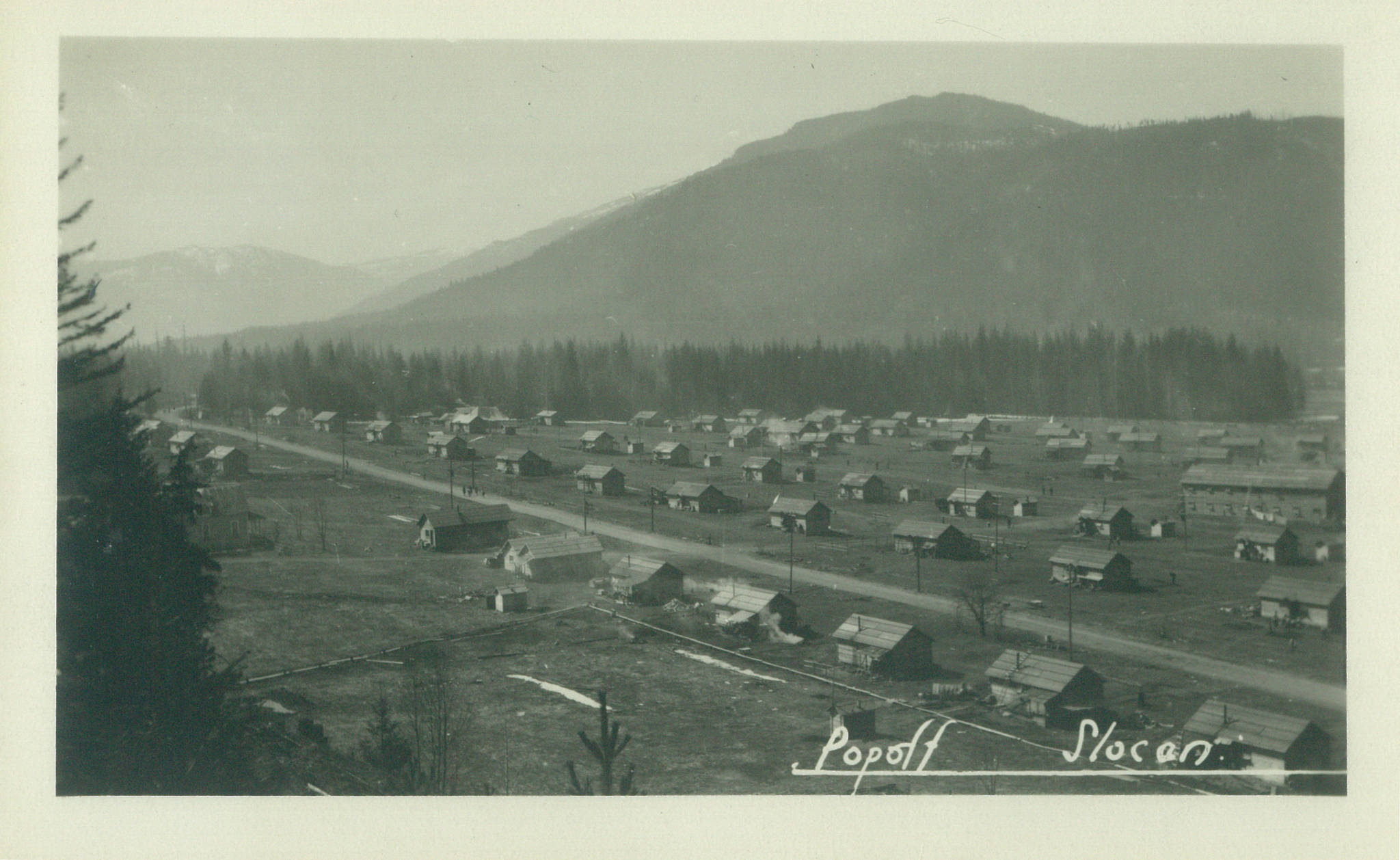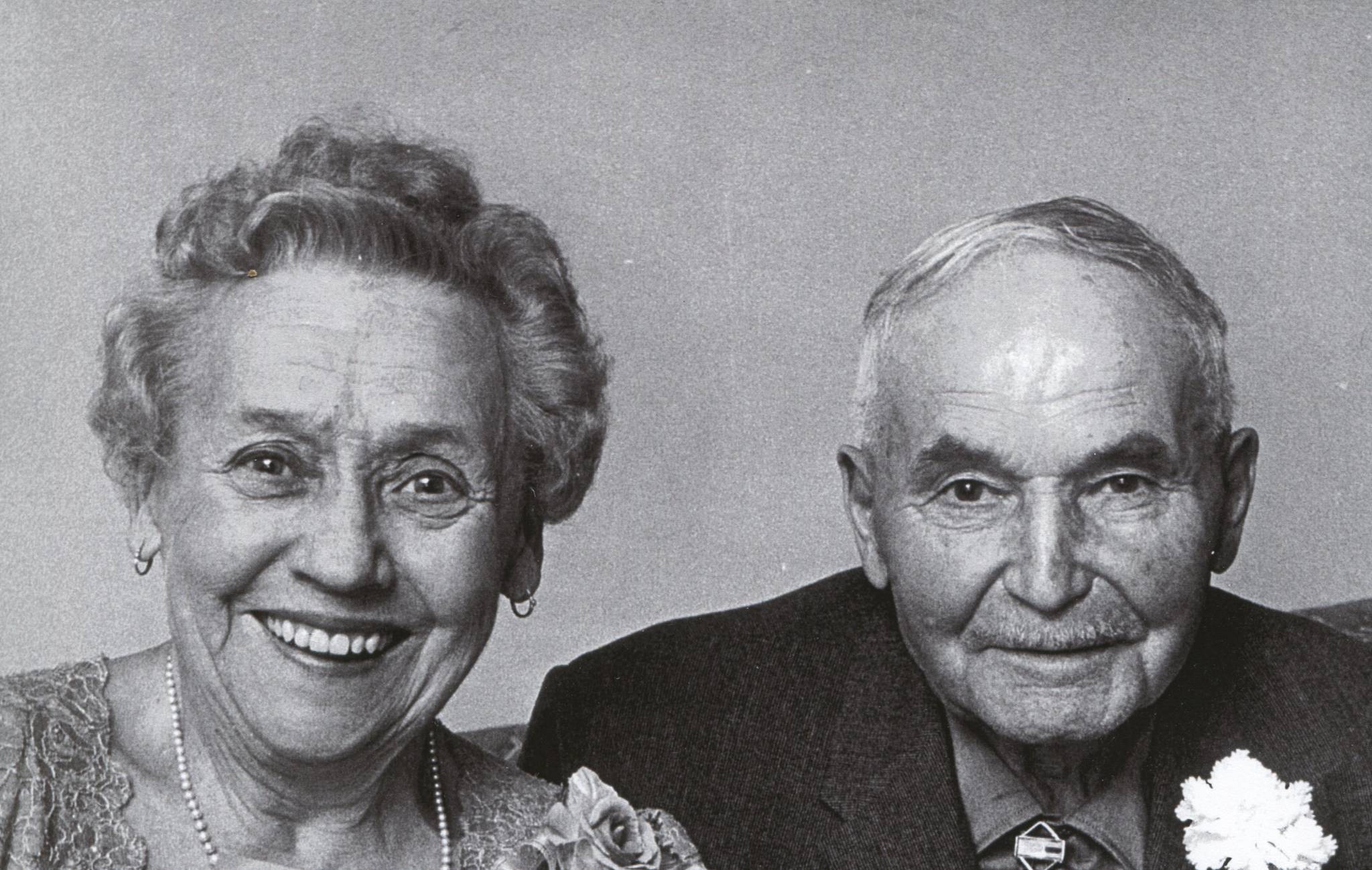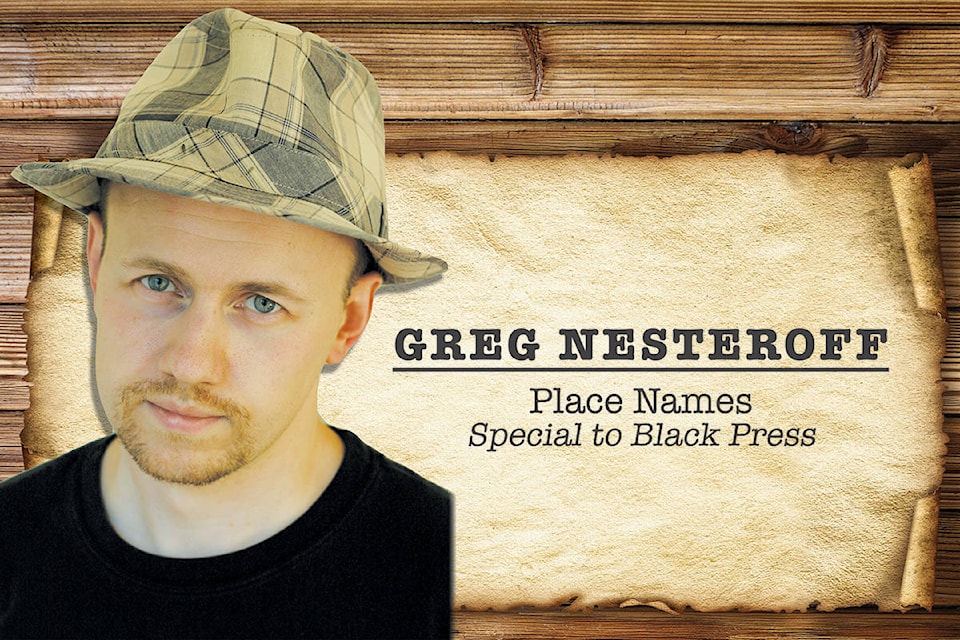A series on West Kootenay/Boundary place names
By Greg Nesteroff
Special to Black Press
The Japanese Canadian internment in our area from 1942-49 did not result in any Japanese place names being added to the local map — at least none that survive — but it did elevate several existing farm and ranch names to prominence.
The four camps in the lower Slocan Valley were Popoff, Bay Farm, Lemon Creek and Slocan City. The BC Security Commission leased the Popoff property from Konstantine (1882-1973) and Emilie Rangno Popoff (1887-1977), who acquired the farm, otherwise known as Riverside ranch, in 1912.
The Popoffs were Russian but not Doukhobors. Konstantine changed his name to Popoff from Piroshco upon immigrating to Canada in 1905, probably because he felt it was easier for anglophones to spell and remember.
After the internment, Emilie Popoff gained fame as the first woman elected mayor in the Kootenays. She served that role in Slocan from 1947-49 and was also a school trustee off and on beginning in 1919. She also helped organize the Slocan Valley Women’s Institute in 1929 and was the founding vice-president.
The Popoffs thought they were being good citizens by agreeing to let their property be used for the internment, but eventually soured on the arrangement. All of the activity, Konstantine said, resulted in their land being uprooted from end to end, scattering gravel and rock, and fouling the soil.
“It took us over 32 years of the very hardest work and considerable expenditure to bring our place from the wild bush land to the productive state it was in when the [Commission] leased it,” he wrote in 1947. “After approximately five years of BC Security Commission occupation, the productiveness of the farm is destroyed.”
The Popoffs asked the Commission to compensate them, or buy the land outright, and submitted a claim for $28,000 (about $370,000 today). The Commission had an appraisal done which found the couple was only entitled to about $9,000 ($119,000 today). It’s not clear what amount was finally paid, but the Popoffs gave up farming and moved to Vancouver.
During the internment, Popoff was home to about 1,000 Japanese Canadians. Although it has been partly subdivided, the bulk of the site is now an open field. Highway 6 cuts directly through it.
Bay Farm, often spelled Bayfarm, is immediately south of Slocan City and was named for the Bay family. Like the Popoffs, David (1870-1922) and Annie Schuldies Bay were Russian immigrants. It’s not known what year they arrived — they weren’t on the 1911 or 1921 census — but David died in Slocan. Son David Jr. (1904-77) married Willetta Hicks (1904-93) in 1925 and they had eight children.
Over 1,300 people were interned at Bay Farm, including science broadcaster David Suzuki, writer Joy Kogawa, and architect Raymond Moriyama. After the war the farm was subdivided; it’s no longer easily recognizable, although the name remains in local use.
While Lemon Creek was already a community name before the internment, it became an actual townsite for the more than 1,800 Japanese Canadians forced to live there. Its streets were named Elm, Holly, Gilead, Fir, Tulip, Spirea, Rose, Dogwood, and Cedar. Although the property was leased from the Anderson family, the camp was only ever known as Lemon Creek. Like Popoff, most of the former Lemon Creek camp is now an open field.
Additionally, the 60-acre Harris Ranch, also known as Bosun Ranch, between Silverton and New Denver, was leased from Joseph Colebrook Harris (1871-1951). You can read all about the property and the man in a new book, Ranch in the Slocan: A Biography of a Kootenay Farm, 1896-2017 by J.C.’s grandson Cole Harris. Cole also devoted an installment in his Slocan History Series to the internment years on the ranch, entitled Mist and Green Leaves.
Although the exact number of people interned at the ranch is unknown, Harris estimates it was 200 to 250, split between an existing ranch house and shacks built on what he calls the Far Field.
On the south side of Carpenter Creek, in the neighbourhood known as the Orchard, 275 shacks were erected. Some still survive. The Orchard is also home to the Nikkei Internment Memorial Centre, which opened in 1994.
Lastly, the two-acre Nelson Ranch just north of New Denver was named for Hugh Spence Nelson (1864-1946) who ran a dairy there. The number of people interned on that property isn’t known. The name is no longer in common use.
There were other local camps too, but they simply took the names of the communities they were located in, namely Rosebery, Kaslo, Greenwood, and Christina Lake.
Although not in the West Kootenay/Boundary, the internment camp of Tashme, 20 km east of Hope, got its name by combining the first two letters of three BC Security Commission officers’ surnames: Austin T. Taylor, John Shirras, and Frederick J. Mead.
In 2012, the Slocan Valley Heritage Trail Society unveiled interpretive signage at Lemon Creek and Popoff explaining their place in the internment. This year another sign was unveiled at the pullout north of Slocan commemorating all four internment sites in the lower valley, collectively known as Slocan Extension. Similar signs were unveiled at New Denver and Kaslo.



